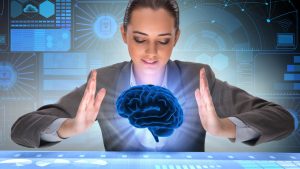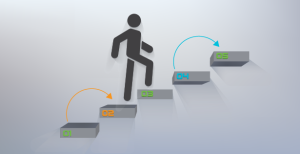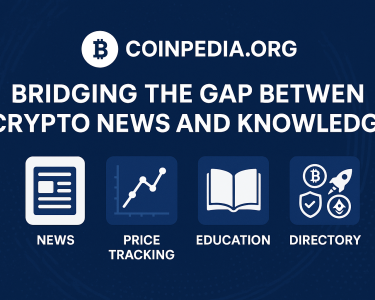Introduction
Imagine a school where computers help you learn faster and a workplace where digital tools guide your career. Technology is changing the way we learn and work. In today’s world, adapting to change is more important than ever. This article shows how technology is Reshaping Education and career paths. We will explain simple ideas in clear language that is easy for kids and adults to understand. Whether you are a student or just curious about the future, you will learn how modern tools and innovative ideas help us grow, learn, and succeed.
What is Technology’s Role in Education?

Technology plays a big part in education. It makes learning fun and interactive. Today, students use digital devices like computers and tablets to study subjects like math, science, and art. With online education platforms, students can take classes from anywhere in the world. This makes education flexible and accessible. Modern tools such as interactive whiteboards and educational apps help teachers explain complex ideas in simple ways. This mix of technology and learning is creating a new era called digital learning. It lets students learn at their own pace and explore new topics with just a click. Technology in education is making school more exciting and open to everyone.
What is Technology’s Role in Shaping Career Paths?
Technology also changes how we work. It opens up new job opportunities and helps people find career paths they never imagined. In many fields, digital skills are very important. For example, jobs in information technology, digital marketing, and online content creation are growing fast. Modern workplaces use smart software and cloud tools to manage projects and communicate. This makes work easier and more efficient. Technology enables remote work, so you can work from home or anywhere with an internet connection. With innovation and new digital tools, the way we start and grow our careers is changing quickly. People learn new skills through online courses and digital training, which guide them to a successful future.
What is Adapting to Change in Today’s World?

Adapting to change means learning new ways to live and work as the world evolves. Technology makes our lives more connected and fast-paced. For example, when schools shift to digital learning or offices start using video calls, we need to adjust. This means being open to new ideas and tools. Adapting to change is about staying curious, learning continuously, and embracing new opportunities. It helps you become resilient and prepared for the future. In a world full of innovation, learning to adapt is the key to success in both education and career paths.
How Digital Learning is Transforming Education
Digital learning is a major part of modern education. With the internet, students can access information and courses from anywhere. Virtual classrooms and online tutors make learning interactive. Digital learning tools like educational games, videos, and quizzes help students understand topics better. These tools also let teachers track progress and customize lessons for each student. This personalized approach helps students learn more effectively and enjoy their studies. The rise of digital learning means that education is not limited to traditional classrooms. It opens up new ways for everyone to learn, no matter where they are.
How Online Education Shapes Future Career Paths

Online education is not just for school—it also helps build career paths. Many professionals now take online courses to improve their skills. Platforms offering digital courses make it possible to learn new job skills from experts all over the world. This helps people stay updated with the latest trends in their fields. As a result, online education prepares individuals for future careers that require new technologies and digital expertise. By combining traditional learning with online classes, you get a broader perspective. This blend of learning methods ensures you are ready for a changing job market and can find exciting opportunities.
The Benefits of Blending Technology with Education and Career Paths
Blending technology with education and career paths offers many benefits. First, it makes learning flexible and accessible. With digital tools, anyone can study at any time. Second, it helps people gain the skills needed for modern jobs. Online courses and virtual classrooms offer up-to-date knowledge. Third, this blend makes work more efficient and creative. Digital tools streamline tasks and improve collaboration. Lastly, embracing technology in learning and work prepares you for a future filled with opportunities. This combination leads to a more innovative and adaptable society.
Creating a Simple Strategy for Adapting to Change

To successfully adapt to the fast-paced digital world, start with small steps. Begin by exploring online resources and digital tools that interest you. Set aside time each day to learn something new online. Create a schedule that includes both traditional studies and digital learning. Engage with interactive educational apps and join online communities related to your interests. These small steps will help you become comfortable with new technologies. By building your digital skills gradually, you will be better prepared to navigate the evolving landscape of education and career paths.
Table: Traditional Learning vs. Digital Learning and Their Impact on Career Paths
| Feature | Traditional Learning | Digital Learning |
|---|---|---|
| Learning Environment | Classroom-based, fixed schedule | Flexible, accessible anywhere with internet |
| Teaching Methods | Lecture-based, physical textbooks | Interactive, multimedia resources |
| Accessibility | Limited by location and schedule | Accessible 24/7, globally available |
| Skill Development | Focus on foundational skills | Emphasis on digital and technical skills |
| Career Preparation | Standard curriculum | Tailored courses, continuous online updates |
This table shows the differences between traditional learning and digital learning. Notice how digital learning provides more flexibility and prepares you for modern career paths by focusing on digital skills and accessible education.
The Role of Innovation in Shaping the Future

Innovation is at the heart of change in both education and career paths. New tools and methods are being developed every day that make learning more interactive and work more efficient. Technology continues to push boundaries, offering solutions that make education more personalized and careers more dynamic. Whether it’s using artificial intelligence to tailor lessons or virtual reality to simulate job training, innovation drives progress. Embracing these new ideas helps create a future where everyone can succeed, no matter where they come from.
How to Stay Ahead in a Changing World
Staying ahead in a rapidly changing world requires a willingness to learn and adapt. Keep up with new trends in technology, education, and work by reading articles, watching videos, and participating in online courses. Practice using new tools and software that can improve your skills. Ask questions and be curious. Remember, every new skill you learn makes you more prepared for the future. By staying informed and open to change, you will continue to grow and succeed in your education and career paths.
The Impact of Digital Transformation on Society

Digital transformation is changing society in many ways. It makes information accessible, connects people from around the world, and opens up new opportunities for learning and work. As technology reshapes education and career paths, it also helps break down barriers. This transformation encourages equality and empowers individuals to achieve their dreams. By embracing digital transformation, society becomes more inclusive, innovative, and forward-thinking. It sets the stage for a future where everyone has the tools to succeed.
The Role of Lifelong Learning in a Digital Age
Lifelong learning is the idea that education does not stop after school. In today’s world, lifelong learning is more important than ever. With online education and digital courses, you can continue to grow your skills throughout your life. This constant learning helps you adapt to new job requirements and changing technologies. Whether you are a student or a working professional, committing to lifelong learning will keep you relevant and competitive. It is a key part of adapting to change and ensuring that you can take advantage of every opportunity that comes your way.
FAQs
Q1: What is technology’s role in education?
A: Technology makes learning more flexible and interactive through digital tools, online courses, and interactive apps, creating a modern, engaging learning environment.
Q2: How does digital learning affect career paths?
A: Digital learning equips people with new skills, offers continuous education, and prepares them for modern job markets by focusing on digital and technical abilities.
Q3: What does it mean to adapt to change?
A: Adapting to change means learning new skills, embracing modern tools, and staying open to new ideas in both education and work.
Q4: Why is lifelong learning important in today’s world?
A: Lifelong learning helps you keep up with new trends, update your skills continuously, and remain competitive in a changing digital landscape.
Q5: How can I start adapting to technological changes in my education?
A: Begin by exploring online resources, joining digital classes, using educational apps, and staying informed about the latest innovations in technology.
Conclusion
Adapting to change through technology transforms education and career paths. By Embracing Digital Learning, innovation, and lifelong learning, we build a future where growth and success are limitless. This blend of modern tools and traditional values empowers us to achieve our dreams and thrive in an ever-changing world.




